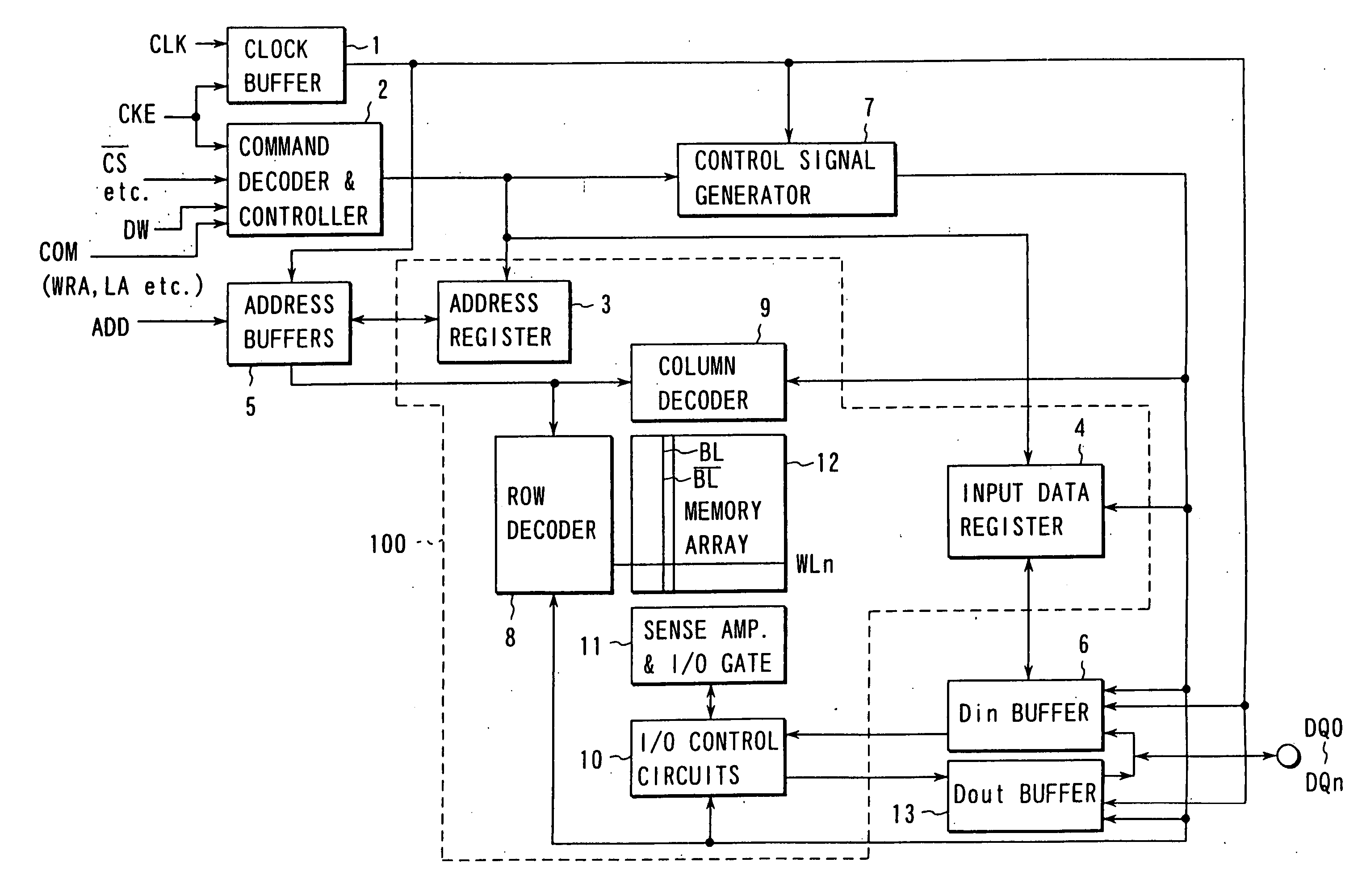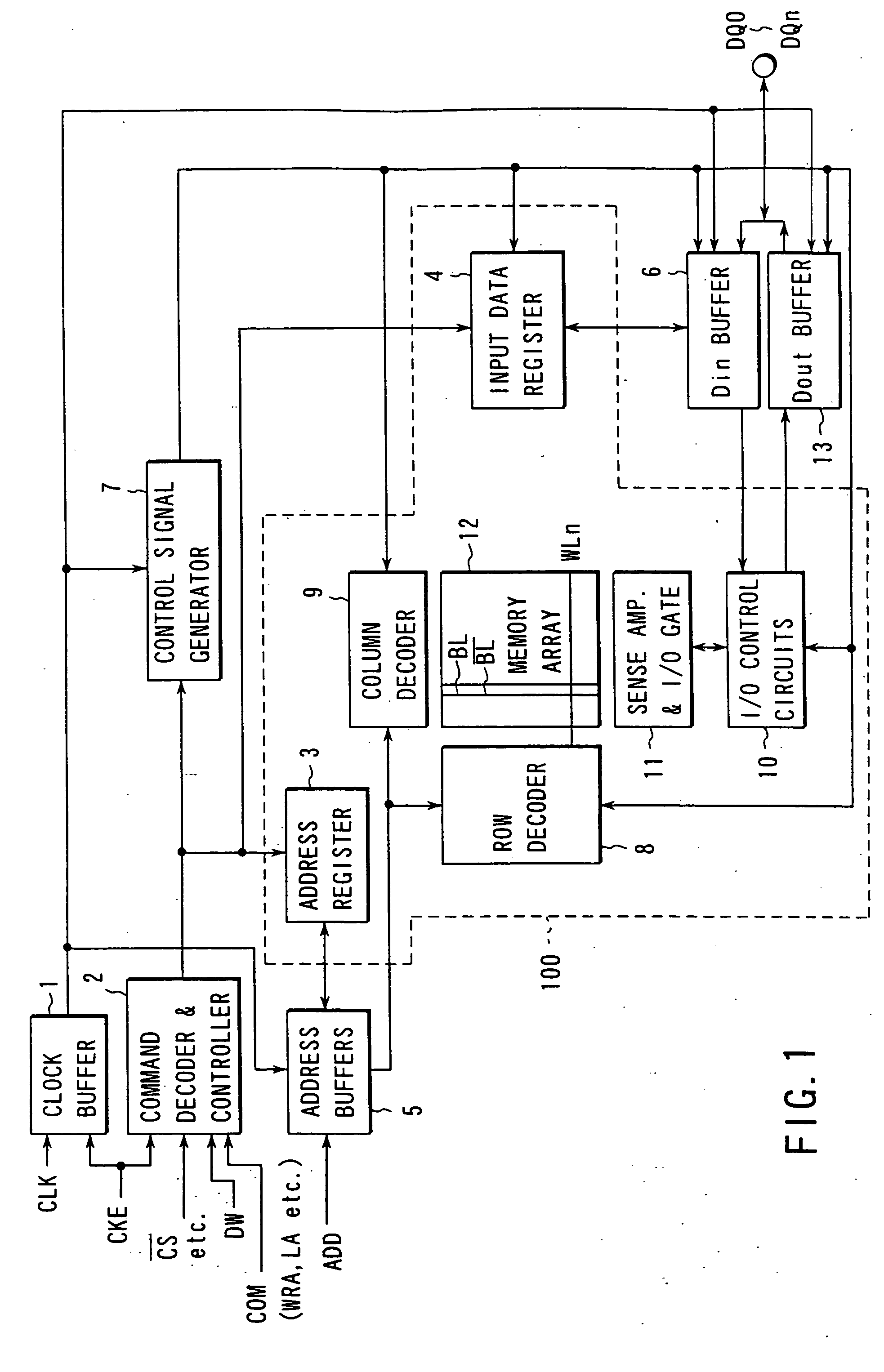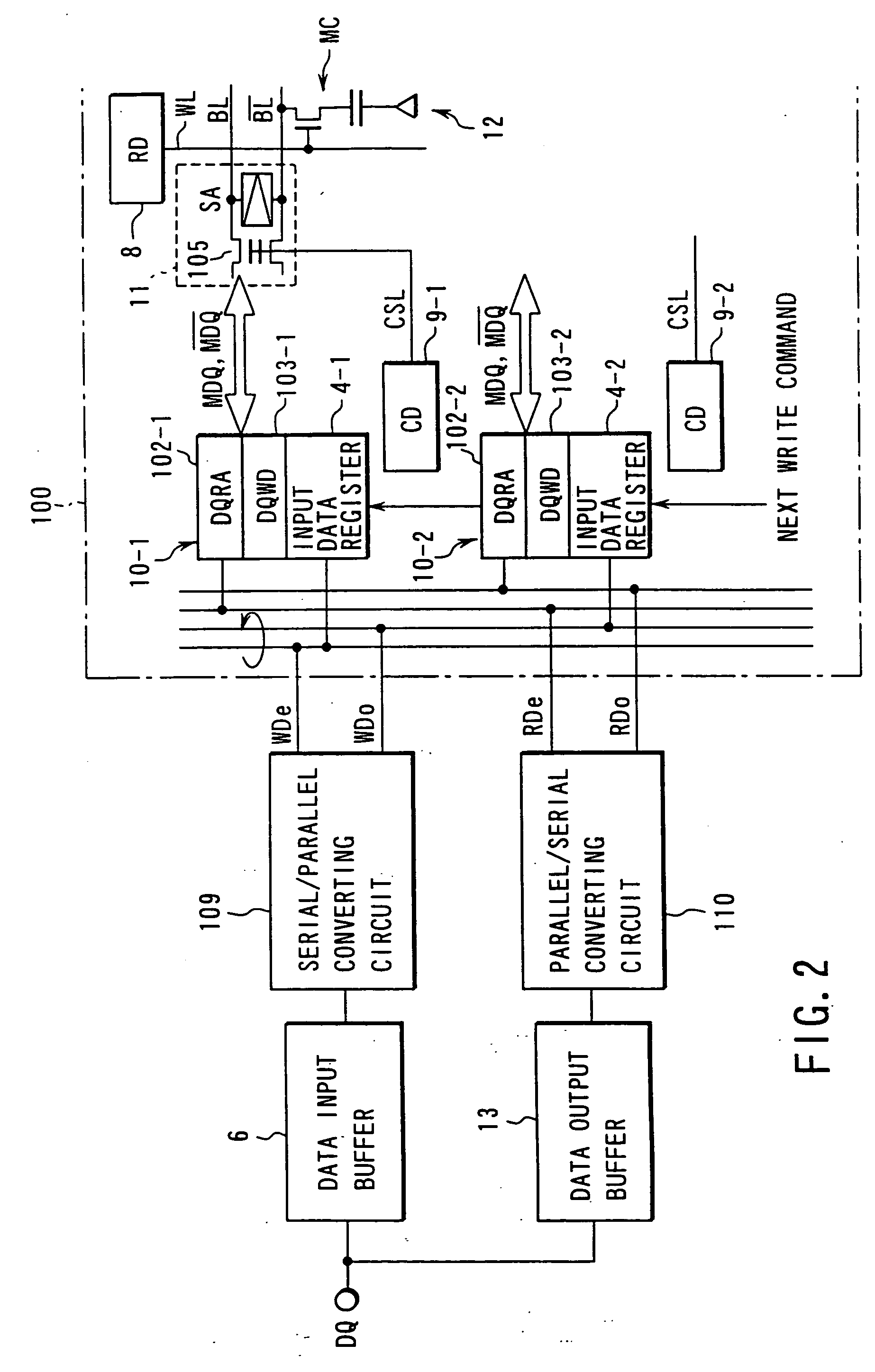Method for writing data to a semiconductor memory comprising a peripheral circuit section and a memory core section including a memory cell
a technology of semiconductor memory and peripheral circuit, which is applied in the direction of information storage, static storage, digital storage, etc., can solve the problems of inability to greatly reduce the cycle time (random cycle time=trc) of the memory core, and the difficulty of making random access to cell data in the memory core, so as to reduce the random cycle time and reduce the data path
- Summary
- Abstract
- Description
- Claims
- Application Information
AI Technical Summary
Benefits of technology
Problems solved by technology
Method used
Image
Examples
first embodiment
[0034] [First Embodiment]
[0035] FIGS. 1 to 4 are diagrams for illustrating a semiconductor memory device according to a first embodiment of this invention, FIG. 1 being a block diagram showing the schematic basic construction of an FCRAM and FIG. 2 being a block diagram showing the schematic construction of an extracted main portion associated with the data write and readout operation of a DDR-SDRAM. Further, FIG. 3 is a circuit diagram showing an example of the concrete circuit construction of a DQ write driver and input data register (latch circuit) in the circuit shown in FIG. 2. FIG. 4 is a timing chart for illustrating the operation of the circuits shown in FIGS. 2 and 3, and in this case, an example in which the burst length is set to “2” based on the specification of the DDR-SDRAM is shown.
[0036] As shown in FIG. 1, the FCRAM (SDR-FCRAM, DDR-FCRAM) includes a clock buffer 1, command decoder & controller 2, address register 3, input data register 4, address buffer 5, data inp...
second embodiment
[0061] [Second Embodiment]
[0062]FIG. 5 is a timing chart for illustrating a data write method for a semiconductor memory device according to a second embodiment of this invention. In the first embodiment, the FCRAM in which the command is supplied in one clock cycle is explained as an example, but the second embodiment is applied to a case wherein the command is supplied as a packet in two successive clock cycles as is disclosed in International Application WO98 / 56004.
[0063] As the actual FCRAM operation, the refresh operation and a function of mode set cycle as in an SDRAM are provided in addition to the read / write operation, and therefore, it is difficult to realize all of the operations by giving a command only once in the random cycle time tRC as explained so far. Therefore, it is more realistic to define the operations by a combination of two commands given as a packet in the successive clock cycles as disclosed in the above Application.
[0064] For example, if a write command ...
third embodiment
[0066] [Third Embodiment]
[0067] FIGS. 6 to 9 illustrate a semiconductor memory device according to a third embodiment of this invention and FIG. 6 is a block diagram showing the schematic basic construction of an FCRAM. FIGS. 7A and 7B are block diagrams each showing the construction of an address coherency detector in the circuit shown in FIG. 6. FIG. 8 is a block diagram showing the schematic construction of an extracted portion associated with the data write and readout operation of a DDR-SDRAM and FIG. 9 is a circuit diagram showing an example of the construction of a readout data switching circuit for switching an output signal of a DQ read amplifier and an output signal of a data register in the circuit shown in FIG. 8.
[0068] The third embodiment is so constructed that data from the input data register 4 is directly read out instead of data from the memory cell when a read command is given before a next write command is given in the late write operation and if it coincides wi...
PUM
 Login to View More
Login to View More Abstract
Description
Claims
Application Information
 Login to View More
Login to View More - R&D
- Intellectual Property
- Life Sciences
- Materials
- Tech Scout
- Unparalleled Data Quality
- Higher Quality Content
- 60% Fewer Hallucinations
Browse by: Latest US Patents, China's latest patents, Technical Efficacy Thesaurus, Application Domain, Technology Topic, Popular Technical Reports.
© 2025 PatSnap. All rights reserved.Legal|Privacy policy|Modern Slavery Act Transparency Statement|Sitemap|About US| Contact US: help@patsnap.com



